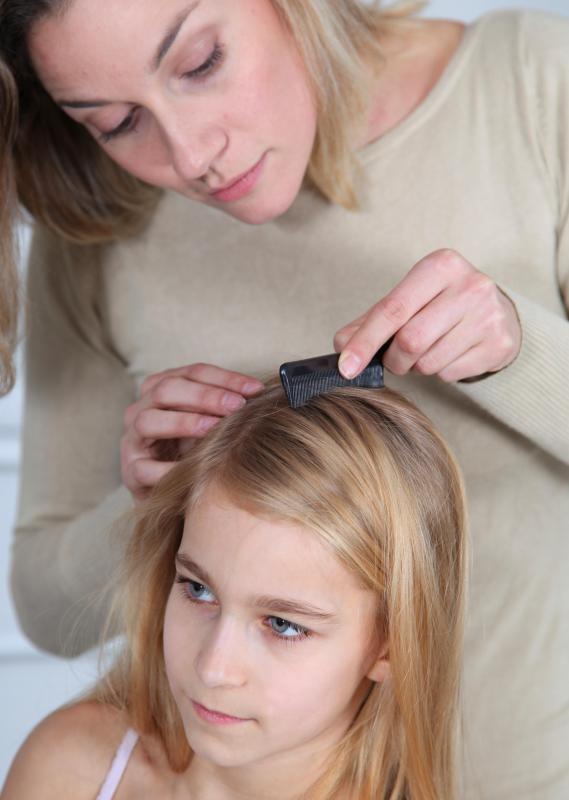At TheHealthBoard, we're committed to delivering accurate, trustworthy information. Our expert-authored content is rigorously fact-checked and sourced from credible authorities. Discover how we uphold the highest standards in providing you with reliable knowledge.
What are Nits?
Nits are the eggs of head lice, parasites which live on the human scalp and feed on their host’s blood. Usually, nits are found attached to the hair shafts of their host. In order to eliminate a head lice infestation, both hatched lice and nits must be killed or otherwise removed from their host’s scalp.
Head lice are parasitic insects which live on the human scalp and survive by feeding on their host’s blood. They are usually no bigger than a sesame seed, and thus can be difficult to see. Many people realize they have head lice only when their scalp begins to itch, a reaction to the saliva deposits left by lice when they draw blood. Head lice are passed from person to person when an infected person’s head comes into contact with a non-infected person’s head, or when a non-infected person’s head comes into contact with an item that has touched the infected person’s head, such as a hat or headphones.

Once head lice have infested their host’s scalp, they deposit their eggs, known as nits, on his hair shafts. Nits are usually white or yellow in color, and are extremely small. Many people mistake these eggs for flakes of dandruff, and thus fail to eliminate them. As long as they are allowed to hatch, however, the eggs will develop into adult lice which feed on their host and then deposit their own eggs, a cycle which can continue indefinitely.

In order to eliminate a head lice infestation, both hatched lice and nits must be killed or otherwise removed from their host’s scalp. This can often be accomplished using over-the-counter shampoos designed to kill lice and their eggs. If an over-the-counter shampoo proves unsuccessful in ending an infestation, a physician may recommend a prescription-strength shampoo treatment. Those who would prefer not to apply chemical treatments to their scalp may wish to try using a comb which has been specially designed to remove lice and their nits. This treatment may need to be repeated for several days before all lice and eggs are removed.
Contrary to what some people believe, a head lice infestation is not indicative of poor personal hygiene. Anyone whose head comes into contact with lice can become infested, and normal hair care procedures will not prevent or eliminate infestations. Therefore it is important to monitor the scalps of those in close contact with an infected person, such as family members and classmates.
AS FEATURED ON:
AS FEATURED ON:












Discuss this Article
Post your comments